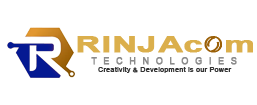Organization Security: Introduction
On a personal level, network security includes only the downloading and installation of anti-virus software and firewall settings. However, when the same problem arises in a business organization, then the solution cannot be as simple as in the personal computer networks. As the risks are many in a business organization, there should be a complete system dedicated to securing the networks.
No matter how large or small your company is, you need to have a plan to ensure the security of your information assets. Such a plan is called a security program by information security professionals. Any organization should monitor its system for potential unauthorized access and other kinds of attacks. In order to safeguard sensitive information, it is important to perform routine checks and create a reliable and safe network.
Elements of a Good Security Program Organizational Basis
It takes a holistic approach that describes how every part of your company is involved in the program. A security program is not an incident handling guide that details what happens if a security breach is detected. Failure to protect your data’s confidentiality might result in customer credit card numbers being stolen, with legal consequences and a loss of goodwill. Lose your clients’ confidential information and you may have fewer of them in the future.
1.Designated security officer
For most security regulations and standards, having a Designated Security Officer (DSO) is not optional — it’s a requirement. Your security officer is the one responsible for coordinating and executing your security program.
2.Policies and Procedures
The policies and procedures component is the place where you get to decide what to do about them. Areas that your program should cover include the following:
Physical security documents how you will protect all three C-I-A aspects of your data from unauthorized physical access.
Authentication, authorization, and accountability establishes procedures for issuing and revoking accounts. It specifies how users authenticate, password creation and aging requirements, and audit trail maintenance.
Security awareness makes sure that all users have a copy of your acceptable use policy and know their responsibilities; it also makes sure that your IT employees are engaged in implementing your IT-specific policies.
3.Organizational Security Awareness
The security community generally agrees that the weakest link in most organizations’ security is the human factor, not technology. And even though it is the weakest link, it is often overlooked in security programs. Don’t overlook it in yours.
Every employee needs to be aware of his or her roles and responsibilities when it comes to security. Even those who don’t even touch a computer in their daily work need to be involved because they could still be targeted by social-engineering attacks designed to compromise your physical security.
4.. Audit compliance plan
This component of your security program dictates how often you will audit your IT security and assess its compliance with your security program.
Periodic security assessments are important for finding out whether your security has already been breached. They help you to stay on top of new security threats with the right technology and staff training. And they help you make smart investments by helping you to prioritize and focus on the high-impact items on your list.
5.Regulatory Standards Compliance
In addition to complying with your own security program, your company may also need to comply with one or more standards defined by external parties. This component of your security plan defines what those standards are and how you will comply. Regulatory standards that might affect you include HIPAA (for patient information), PCI (for credit card processing), FISMA (for governmental agencies and contractors, see The Barking Seal Q4 2006), Sarbanes-Oxley, and Gramm-Leach- Bliley (for corporate financial management).
Conclusion
It is the responsibility of every organization to develop procedures and policies addressing the security requirements of every organization. These policies work for the safety and security of any organization and are compulsory for any organization working on computers. Protection of the company’s assets would mean that it is protected from liability addressing to the ethical responsibilities of an organization.
Developing an effective security system for networks will give the organization a competitive edge. In the arena of Internet financial services and e-commerce, network security assumes prime importance. The customers would avail the services of internet banking only if the networks are secured.
At RINJAcom we provide excellent end to end cybersecurity services which includes Penetration Testing, infrastructure testing, vulnerability scanning, etc. It offers a comprehensive range of Encrypted Wireless Ethernet and Data Communication.

